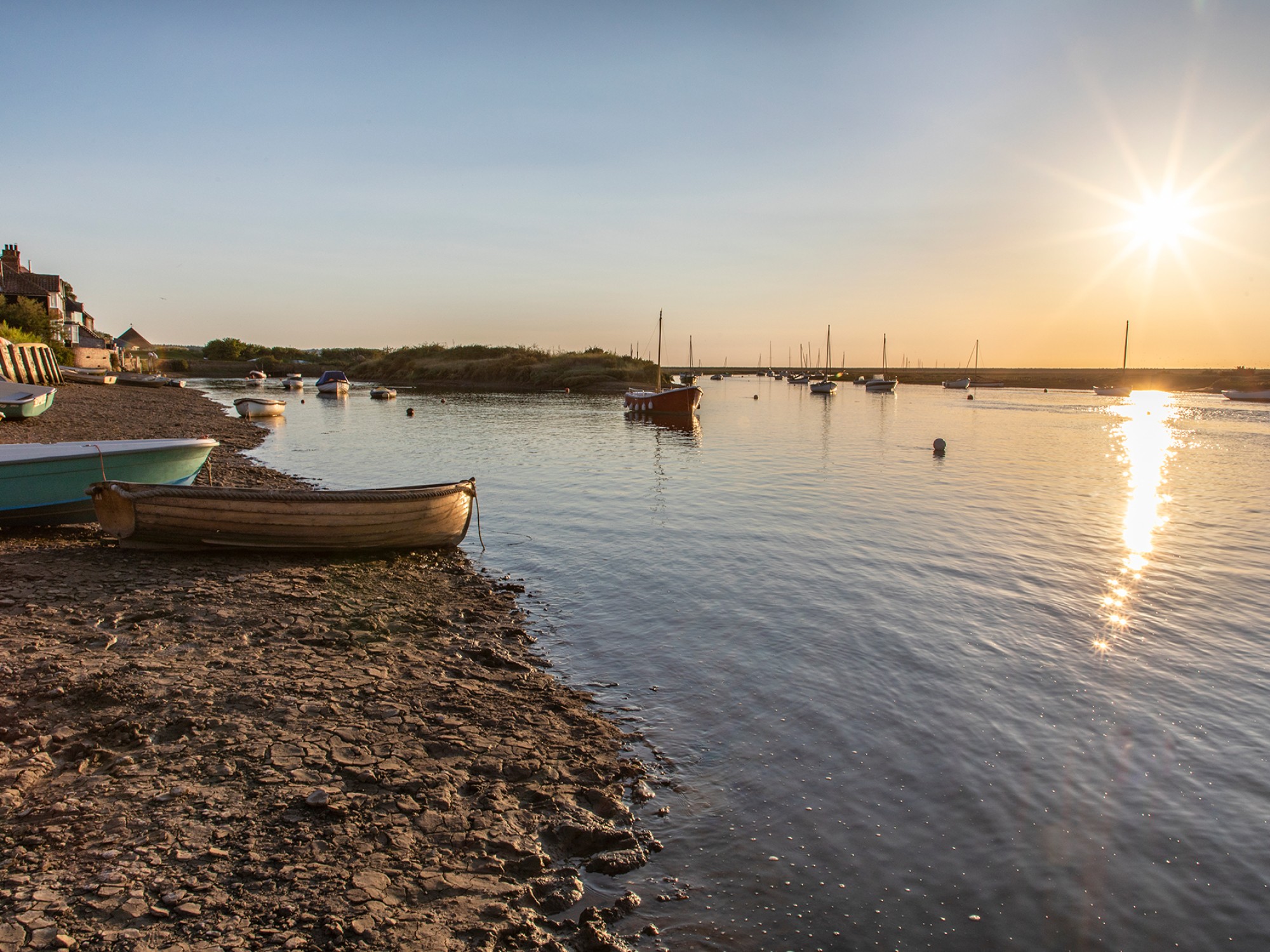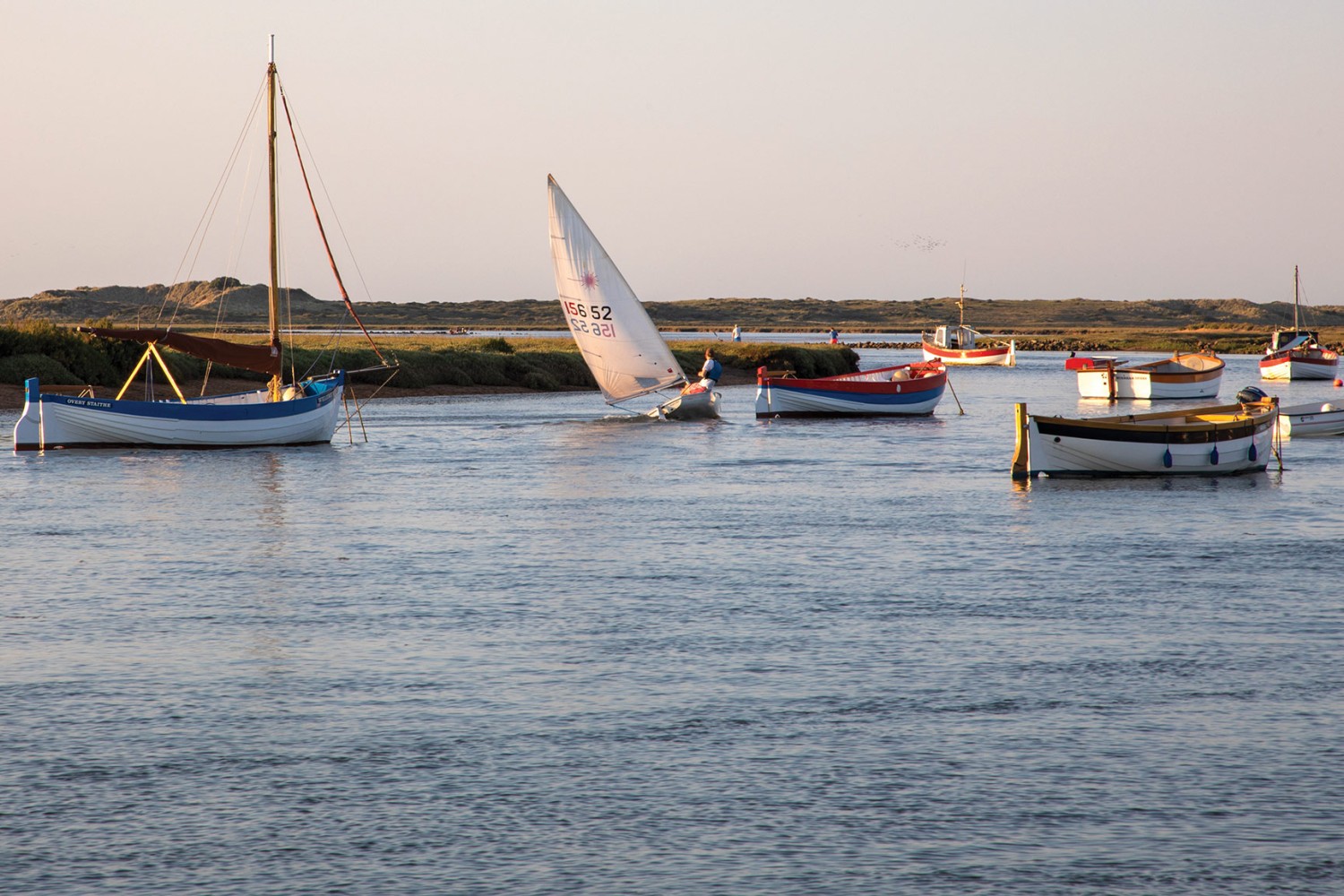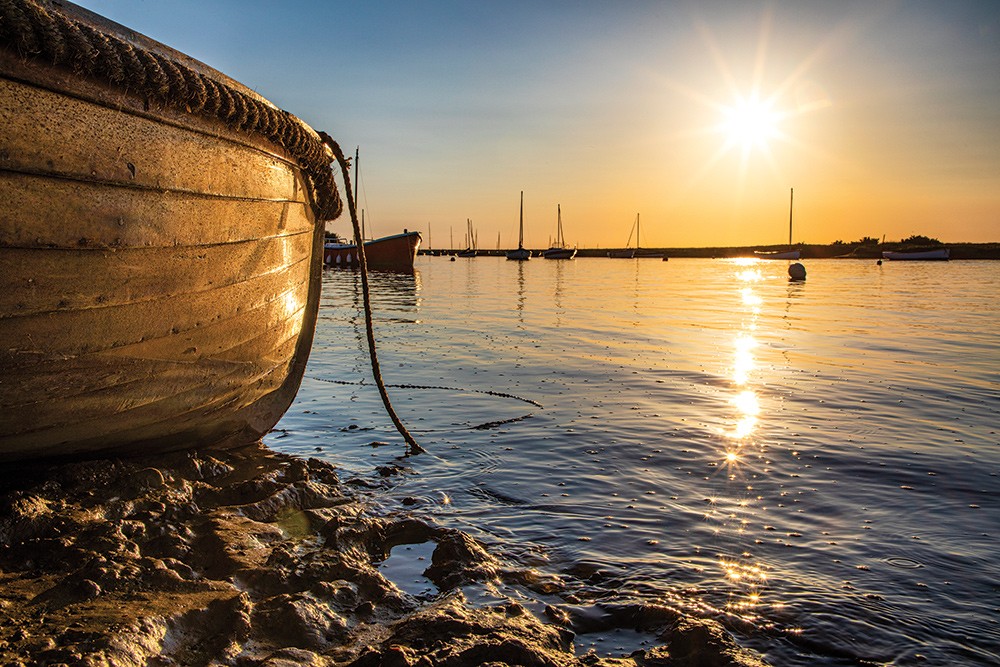
The ever changing face of Burnham Overy Staithe
It’s now one of the most beautiful and peaceful spots in north Norfolk, but 20,000 years ago the River Burn was surrounded by ice sheets and was once a thriving commercial fishing port...
Stroll along the harbour at Burnham Overy Staithe and you’ll see a collection of small sailing boats and yachts dotted about on the water, gently swaying in the breeze.
The low-lying river means large boats can’t pass through for fear of getting stuck, so the waters of the River Burn are generally rather peaceful. Sit on the bank and watch members of the sailing club drift by on their yachts, or walk alongside the river to where it meets the sea on a coastal footpath - where you’ll also find the secluded and often-overlooked Burnham Overy Beach.
There are many ways to enjoy the serene river views, but this luxury hasn’t always been available to locals. Centuries ago, the river would have been inundated with trading vessels and fishermen.
Over in King’s Lynn the town’s links to the influential Hanseatic League transformed it into England’s most important port.
Initially a small European merchant guild set up to protect its towns against piracy and banditry, the Hanseatic League grew to comprise some 200 northern European settlements across seven modern-day countries. In its heyday during the 15th century, members hailed from the Netherlands, Estonia, Poland and Sweden, with its commercial reach extending to Portugal, England, Russia and Italy.
Due to its strategic position, King’s Lynn saw plenty of Baltic merchants stop at its port, and they’d often continue along the north Norfolk coast and dock at other ports such as Burnham Overy Staithe.

While the Hanseatic League began losing its dominance over the North Sea in the mid-16th century England was rapidly growing into an international trader and colonial colossus. The navy’s prowess was expanding and in the quiet village of Burnham Thorpe the birth of a baby boy in 1758 would guarantee England’s future victories in the battles to come.
Horatio Nelson’s naval career officially began when he was 12 years old after his uncle enlisted him on HMS Raisonnable. He was already well acquainted with sailing, having grown up in the bustling port of Burnham Overy Staithe and learning to sail among the ships on the River Burn.
In the early 1800s, while Nelson was manning warships and losing limbs, the River Burn was accommodating schooners carrying up to 80 tons, which were commonly used in coastal trading. There was considerable trade in corn and coal, with merchants stopping at ports all along the north Norfolk coast including Blakeney and Wells-next-the-Sea.
With the introduction of the railway however, there was less demand for marine trading as it was easier and faster to transport goods via rail. International trips to countries like Lithuania and Germany grew more infrequent, but it was the silting of the River Burn that finally stopped these larger ships from accessing Burnham Overy Staithe.
The gradual accumulation of sediment along the riverbed caused the river to become shallower, which led to an increasing reliance on trade via railway and road.
Nelson was already well acquainted with sailing, having grown up in the bustling port of Burnham Overy Staithe and learning to sail among the ships...
Nowadays, the River Burn is classified as a ‘Highly Modified Waterbody’ by the Environmental Agency as a result of the numerous modifications made to it over the centuries. Traders diverted parts of the river into straight sections to allow for easier access along trading routes, and there are several impoundments along the river (such as sluice gates) that have been used to alter the water levels at certain points.
What was perhaps overlooked by our seafaring ancestors was the long-term effects we’re seeing today. River impoundments are known to affect fish migration, and the reduced depth of the river has restricted access to Burnham Overy Staithe via the water.
Thankfully, efforts are being made to protect the river from any further changes. Burnham Overy Harbour Trust is a charity that was established almost 40 years ago with the aim of closely managing the harbour and surrounding creek for the benefit of the environment and the public.
As an attractive riverside village, visitors from all over the country come to Burnham Overy, and the Trust works tirelessly to protect visitors and locals alike from the rapidly-changing tide - while ensuring the harbour itself is protected from littering and overcrowding.
Sailing is a beloved pastime for many on the River Burn, and with a landscape as beautiful as Burnham Overy, it’s easy to see why. Whether you enjoy being out on the water or simply prefer to spectate, take a moment to appreciate the fascinating history the river holds and the natural wonder that brings us such peace and tranquility today.

